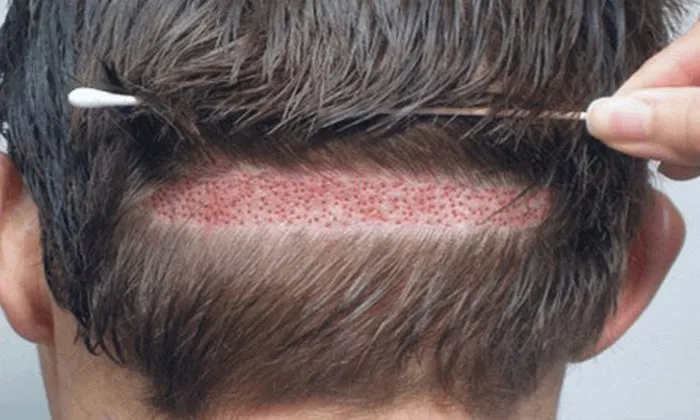When you’ve undergone a hair transplant, you’re often eagerly awaiting the results, hoping for a fuller head of hair. However, the process takes time, and during the initial phases, you might wonder if there’s a way to improve the appearance of your hair. This leads to the question: “How long after a hair transplant can I use hair fibers?” In this comprehensive guide, we will delve into this topic, providing insights, best practices, and an in-depth understanding of using hair fibers after a hair transplant.
1. Understanding the Recovery Process After a Hair Transplant
Before we explore when you can start using hair fibers post-transplant, it’s crucial to understand the recovery process, as it greatly impacts your hair’s condition and appearance.
a. Immediate Post-Op Period: Right after a hair transplant, your scalp will be sensitive, and you should avoid applying any products to the transplant area. Your primary focus should be on following the post-operative care instructions provided by your surgeon.
b. The Healing Phase: Over the following weeks, you’ll experience scabbing and redness around the transplant area. These are part of the natural healing process. It’s essential to allow your scalp to heal without interference during this time.
See Also: Can You Use Hair Fibers After Hair Transplant: A Quick Guide
2. When Can I Start Using Hair Fibers?
Using hair fibers after a hair transplant can be a great way to enhance the visual results during the initial recovery phase. Here’s a breakdown of when it’s generally safe to start incorporating hair fibers into your routine:
a. Discuss with Your Surgeon: The best course of action is to consult with your hair transplant surgeon. They can assess your individual progress and provide personalized recommendations. In many cases, surgeons approve the use of hair fibers about two weeks post-surgery, once the initial healing is underway.
b. Non-Invasive Hair Fibers: Opt for non-invasive hair fibers that do not require adhesive or any products that could irritate your sensitive scalp. These fibers can be gently sprinkled or sprayed onto your hair, providing a quick solution to camouflage any post-operative concerns.
3. The Right Way to Apply Hair Fibers
Using hair fibers after a hair transplant is an excellent way to achieve a fuller look while waiting for the transplanted hair to grow in fully. Here’s a guide on how to apply them effectively:
a. Clean Scalp: Ensure your scalp is clean and free of any debris or oils before applying hair fibers. A mild, sulfate-free shampoo is recommended.
b. Dry Hair: Make sure your hair is completely dry, as applying hair fibers to wet or damp hair can lead to clumping.
c. Apply Sparingly: Start by applying a small amount of hair fibers, focusing on areas that need coverage. Use gentle, tapping motions to disperse the fibers evenly.
d. Style Gently: After applying the fibers, gently style your hair with a wide-toothed comb or your fingers to create a natural look.
4. Benefits and Considerations
Using hair fibers post-hair transplant offers several benefits, but it’s also essential to consider a few factors:
a. Instant Coverage: Hair fibers provide an immediate cosmetic solution, making your hair appear thicker and more voluminous.
b. Boosts Confidence: They can boost your self-esteem during the waiting period for your transplanted hair to grow.
c. Temporary Solution: Remember that hair fibers are a temporary solution and should not be used as a substitute for the long-term results of your hair transplant.
5. Maintaining Hair Health After Transplant
While using hair fibers can improve the visual aspect of your hair post-transplant, it’s essential to focus on maintaining the health of your newly transplanted hair:
a. Follow Post-Op Care Instructions: Adhere to the post-operative care instructions provided by your surgeon. This will ensure the best possible outcome for your transplant.
b. Optimal Nutrition: Consume a balanced diet rich in essential vitamins and minerals, such as biotin, to support hair growth.
c. Avoid Harsh Products: Refrain from using harsh hair products, as they can damage your hair and scalp. Stick to mild, sulfate-free shampoos and conditioners.
d. Regular Check-Ups: Continue to schedule follow-up appointments with your surgeon to monitor the progress of your hair transplant and address any concerns.
6. Conclusion: Patience and Care in the Post-Transplant Phase
In conclusion, using hair fibers after a hair transplant can be a practical way to enhance your appearance during the initial healing phase. However, it’s crucial to consult with your surgeon for personalized advice on when to start using them. By following best practices for applying hair fibers and maintaining the overall health of your transplanted hair, you can maximize the benefits of your hair transplant and look forward to long-lasting, natural results. Remember, patience and proper care are key elements of a successful hair transplant journey.


